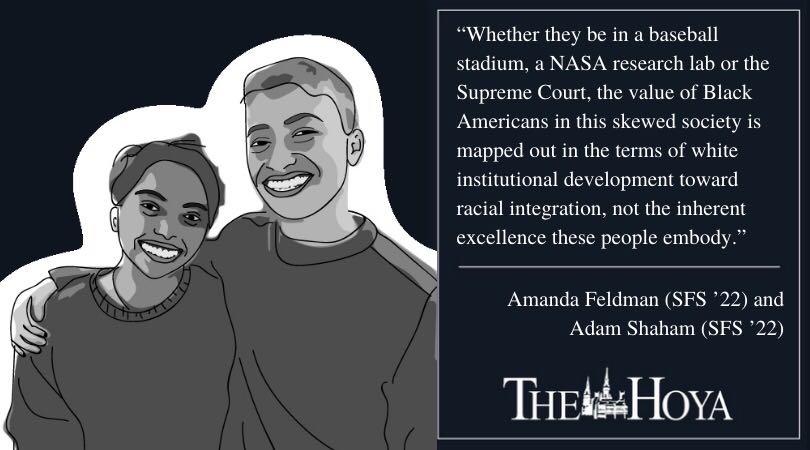Black history is American history.
Since 1619, when the first Black slaves were brought to the United States, Black people have been shaping American history in more ways than have been recorded. From carrying the American economy on their backs to driving innovation and creating entire cultural movements, Black people have had a profound impact on American institutions and culture — an impact that has often been not just forgotten, but erased.
Yet today, Black history has been relegated to a history of “firsts.” Instead of focusing on the breadth of the Black experience, we focus solely on pioneers like Thurgood Marshall, Mae Jemison and Jackie Robinson. These are the names we associate with Black excellence. While we should not minimize the contributions of each of these individuals, acknowledging them solely on the basis of their primacy vastly oversimplifies the rich history of Black people in this country.
In light of this, it is imperative that we do not accept a Black history that is defined solely by the entry of Blacks into white spaces. In a piece in The Atlantic titled “Letter to My Son,” Ta-Nehisi Coates eloquently captures the second-class status to which Black history is often demoted in academia. Coates frames this institutional bias by describing his grandparents’ resistance to an inferior Black history within their own home.
Coates writes, “They were rebelling against the history books that spoke of black people only as sentimental ‘firsts’—first black four-star general, first black congressman, first black mayor—always presented in the bemused manner of a category of Trivial Pursuit. Serious history was the West, and the West was white.”
Coates denounces the history of firsts. Only acknowledging Black pioneers when they enter white society fundamentally devalues the contributions and experiences of Black people. In solely recognizing Black groundbreakers, we delegitimize the humanity and value of Black people before they entered these majority-white spaces. Whether they be in a baseball stadium, a NASA research lab or the Supreme Court, the value of Black Americans in this skewed society is mapped out in the terms of white institutional development toward racial integration, not the inherent excellence these people embody.
This kind of history encourages us to appreciate these pioneers not by their hard-earned merits but only in terms of their novelty in the white world. A Black history of firsts assumes traditionally white spaces to be the default standard by which human progress can be mapped and neatly timelined. It places a premium on a history of white achievements, as if Black Americans weren’t innovating, thinking, writing and inventing long before they were accommodated into mainstream institutional structures. Thus, a Black history of firsts reinforces an inherently racist power structure and narrative of our collective past.
An inclusive Black history in no way means these firsts cannot be celebrated. On the contrary, we have much to learn from the examples of Madame C.J. Walker, Gwen Ifill and Althea Gibson.
But to acknowledge only these firsts is to forget our history as a country, and at Georgetown University as a school. For instance, when examining Georgetown, a Black history of firsts gives us only a narrow picture of the role of Black Americans in the history of the university.
Georgetown’s first Black students graduated in the 1950s and ’60s, and most of them are still alive today. Samuel Halsey Jr., the first Black Georgetown undergraduate (SFS ’53) passed away in 2012, and our first known Black female student, Margaret Hayes Jordan (NUR ’64) graduated just 56 years ago. While Georgetown’s delayed integration in and of itself speaks volumes about our history of exclusion, our celebration of our own Black firsts also neglects the immense effects Black people have had on our campus since its inception. From enslaved people to servants to presidents of the university, Black people have been everywhere on this campus. Some of our buildings were literally built on their backs. To pretend this presence began in 1949 is to misrepresent the contributions of Black people to our campus, contributions that were numerous and significant even before their entry into white spaces.
Black History Month, while a celebration of those important people who broke through ceilings, must also be a time to remember the contributions that millions of Black Americans made, even before they were ever allowed to be classified as such. Moving beyond this history of firsts is the only way we as a nation can fully reckon with the true impacts of our history of exclusion.
Amanda Feldman is a sophomore in the School of Foreign Service. Adam Shaham is a sophomore in the School of Foreign Service. Hilltop Voices appears online every other Wednesday.














